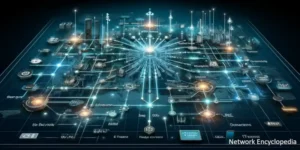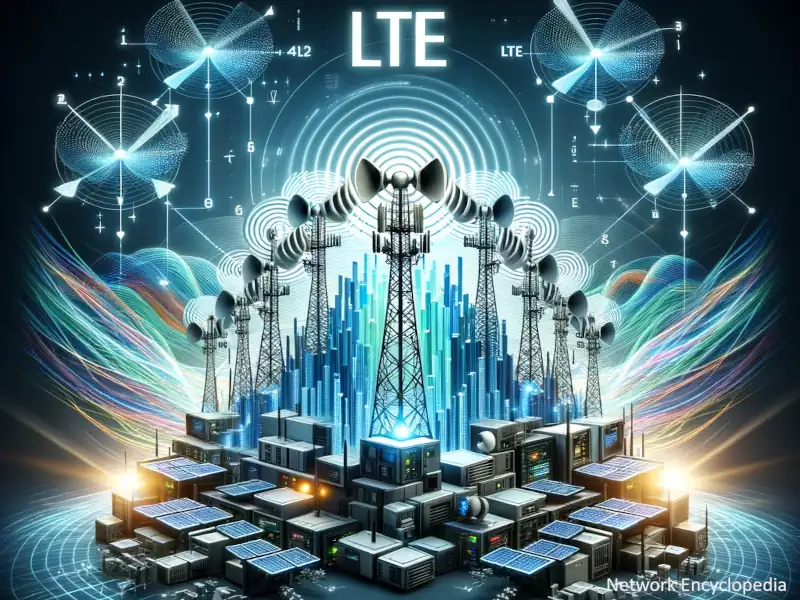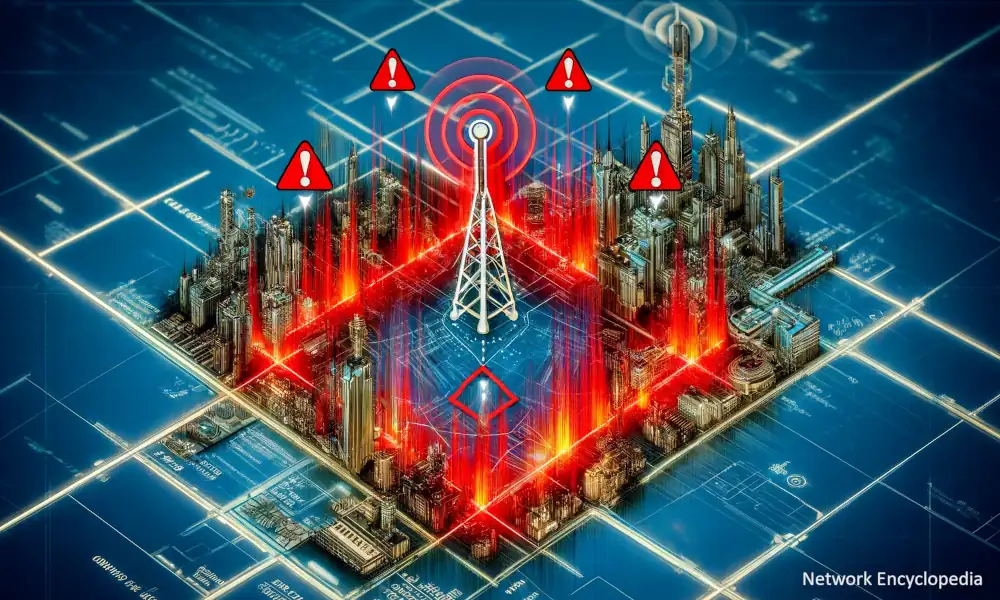Welcome to the digital express lane! In our everyday lives, we’re constantly sending and receiving data, much like cars zipping down a highway. But have you ever wondered what powers this high-speed data traffic on your mobile phone? The hero of our story is LTE—Long Term Evolution. Often just referred to as 4G, LTE is the technology that keeps you smoothly streaming videos, swiftly downloading files, and browsing the internet without a hitch, all on the go.
In this article, we’ll embark on a journey through the world of LTE. We’ll decode how it works, why it’s a game-changer in mobile communications, and how it manages to deliver that crisp, clear video call quality even as you roam around. So buckle up, and prepare for a deep dive into the cellular waves that connect you to the digital world.
Table of Contents:

1. What is LTE?
1.1. A Brief History
Imagine you’re in a time machine, traveling back to the days of the early 2000s. Cell phones are clunky, the internet is sluggish, and watching a video on your phone is a daydream. Fast forward to today, and your smartphone acts almost like a teleportation device, a portal to vast information and entertainment, thanks to LTE.

Long Term Evolution, or LTE, was developed by the 3rd Generation Partnership Project (3GPP) as a standard for wireless broadband communication. It’s designed to enhance the capacity and speed of mobile networks, ushering us into the era of 4G. Compared to its predecessors, LTE represents a significant leap forward, much like jumping from a propeller-driven airplane to a jet.
1.2. The Technical Foundations of LTE
At its core, LTE is a marvel of engineering that transforms airwaves into expressways of data. This is achieved through advanced technologies such as OFDMA (Orthogonal Frequency Division Multiple Access) and MIMO (Multiple Input Multiple Output). Think of OFDMA as a multi-lane highway where each lane is reserved for a different type of vehicle, optimizing the flow and reducing traffic jams. Meanwhile, MIMO can be likened to having multiple radio antennas on both the transmission and reception ends, which is akin to having several coffee straws sucking up your drink simultaneously—it simply gets the job done faster and more efficiently.
1.3. LTE vs. Previous Generations
To appreciate LTE fully, consider a library. Older mobile technologies (like 2G and 3G) could be seen as a small local library where you can borrow books—it’s useful but limited. LTE, on the other hand, is like the gigantic main library with vast archives and rapid retrieval systems, offering a higher volume of information at much greater speeds. This enhancement in speed and efficiency is what allows your smartphone to stream HD videos or download large files in a blink, all while maintaining a stable connection, no matter where you are in the world.
Stay tuned as we dive deeper into the workings of LTE in the following chapters, ensuring you understand every bit of this technological marvel!
To read next: What is AMPS?
2. How Does LTE Work?
2.1. The LTE Network Architecture
Imagine a bustling city—there are roads, buildings, and parks, all meticulously planned to create an efficient, lively environment. Similarly, LTE has its own “city plan,” known as network architecture, which ensures that your data travels efficiently and securely.

At the heart of this architecture are several key components:
- E-UTRAN (Evolved Universal Terrestrial Radio Access Network): Think of this as the main roads in our city analogy. E-UTRAN handles the radio communications between your mobile and the network.
- MME (Mobility Management Entity): This acts like the city’s traffic control system, managing your device’s access to the network, mobility, and security.
- SGW (Serving Gateway) and PGW (Packet Data Network Gateway): These can be seen as major interchanges, directing data traffic within the network and to external networks like the Internet.
This structured design allows LTE networks to handle a large amount of data traffic efficiently, ensuring that your video stream or download is smooth and uninterrupted.
2.2. The Role of Spectrum in LTE
The spectrum in LTE is like the air we breathe—it’s invisible yet essential. In telecommunications, the spectrum refers to the radio frequencies allocated for transmitting all types of data, from your WhatsApp messages to YouTube videos.
LTE networks operate across various bands of frequency, each suited to different types of terrain and usage levels. Imagine a band as a specific type of airwave “flavor.” Some flavors travel farther and penetrate buildings better but might carry data slower, while others are zippier but don’t go as far. Balancing these flavors allows network operators to provide fast and reliable service across both crowded cities and rural areas.
2.3. Signaling and Data Transmission in LTE
Signaling in LTE is like the conversations between air traffic controllers and pilots. It involves the transmission of information necessary to manage the network and ensure data packets travel safely from point A to B.
Data transmission in LTE, on the other hand, is akin to the actual flights themselves—carrying passengers (data packets) to their destinations. LTE uses advanced modulation schemes to make these transmissions fast and efficient, much like using a supersonic jet instead of a prop plane, thus maximizing the capacity and reliability of the network.
To read next: D-AMPS
3. Benefits of LTE
3.1. Speed and Efficiency
One of the most lauded benefits of LTE is its speed and efficiency. For a simple comparison, imagine swapping out a bicycle for a motorcycle. Suddenly, you’re getting to your destinations much faster, with a lot less effort. LTE enhances mobile internet speeds dramatically, making activities like streaming a 4K movie or uploading high-resolution photos as effortless as flicking a switch.

The efficiency comes from LTE’s use of wider bandwidths and advanced antenna technologies, which not only speed up data rates but also reduce latency. Latency is the annoying lag you experience between clicking a link and the page loading; LTE cuts this down significantly, making your digital interactions nearly instantaneous.
3.2. Improved Capacity and Coverage
LTE also improves the capacity of networks, which is akin to widening roads to allow more traffic to flow without bottlenecks. This means more people can connect and maintain high-quality service—even in crowded areas like concerts or sports events.
Moreover, the coverage—how far and well the network reaches—is like ensuring that every nook and cranny of our city has clean, accessible water. By using different spectrum flavors and technologies, LTE extends its reach, ensuring that even those on the outskirts have reliable, fast mobile service. This seamless coverage is critical not just for streamers and social media aficionados but also for essential services like emergency calls and mobile banking.
In the next sections, we’ll explore how LTE is paving the way for future technologies and examine some of the challenges it faces. Stay tuned to discover more about this fascinating backbone of modern mobile communications!
4. LTE and the Future
4.1. Transitioning from LTE to 5G
As we embrace the future, LTE is not being left behind; it’s evolving into something even more powerful. The transition from LTE to 5G is akin to upgrading from a high-definition TV to one with 4K resolution. While the fundamental technology remains the same, the new iteration enhances every aspect to provide a better experience.
5G builds on the foundation laid by LTE, using more advanced technologies like higher frequency bands and new encoding methods to push the boundaries of speed, connectivity, and latency. Think of 5G as LTE on steroids, offering not just faster speeds but also the ability to connect more devices simultaneously. This transition is crucial as our world becomes increasingly connected, and the demand for data grows exponentially.
4.2. LTE in IoT and Beyond
The role of LTE extends beyond smartphones and tablets; it is pivotal in the realm of the Internet of Things (IoT). LTE provides the reliable, widespread coverage necessary for devices—from smart refrigerators to industrial sensors—to communicate seamlessly.
As we look to the future, LTE will continue to play a key role in supporting IoT applications that require mobility and broad coverage. This includes everything from autonomous vehicles that need to send and receive signals in real time to smart city applications that manage everything from traffic lights to water systems.
5. Common LTE Challenges
5.1. Interference Issues
Despite its advancements, LTE is not without its challenges. One major issue is interference, which can be likened to the static you hear on a radio when it’s not properly tuned. In LTE, interference can come from other electronic devices, competing networks, or even natural sources. This disruption can degrade service quality, leading to slower speeds and dropped connections.
5.2. Coverage Gaps
Another challenge is coverage gaps. Like rain shadows in geography, where certain areas receive less rainfall, coverage gaps occur when parts of a network receive weak or no signal. These are often found in rural or densely constructed urban areas. Overcoming these gaps is crucial for ensuring that everyone benefits from the same level of connectivity.

5.3. Security Concerns
Security remains a top priority, as LTE networks, like any other critical infrastructure, are targets for malicious activities. Protecting these networks from unauthorized access and ensuring data privacy are akin to fortifying a castle against invaders. As LTE continues to evolve, enhancing its security features is paramount to safeguard user data and maintain trust in this essential technology.
6. References
To provide a comprehensive understanding of LTE and support the information in this article, the following resources were instrumental:
- Books:
- “LTE – The UMTS Long Term Evolution: From Theory to Practice” by Stefania Sesia, Issam Toufik, and Matthew Baker.
- “Fundamentals of LTE” by Arunabha Ghosh, Jun Zhang, Jeffrey G. Andrews, and Rias Muhamed.
- RFCs (Request for Comments):
- Websites and Online Resources:
- 3GPP official website: 3GPP.org
- International Telecommunication Union (ITU)
- Udemy (online course): LTE Fundamentals: A Comprehensive Guide to 4G Networks